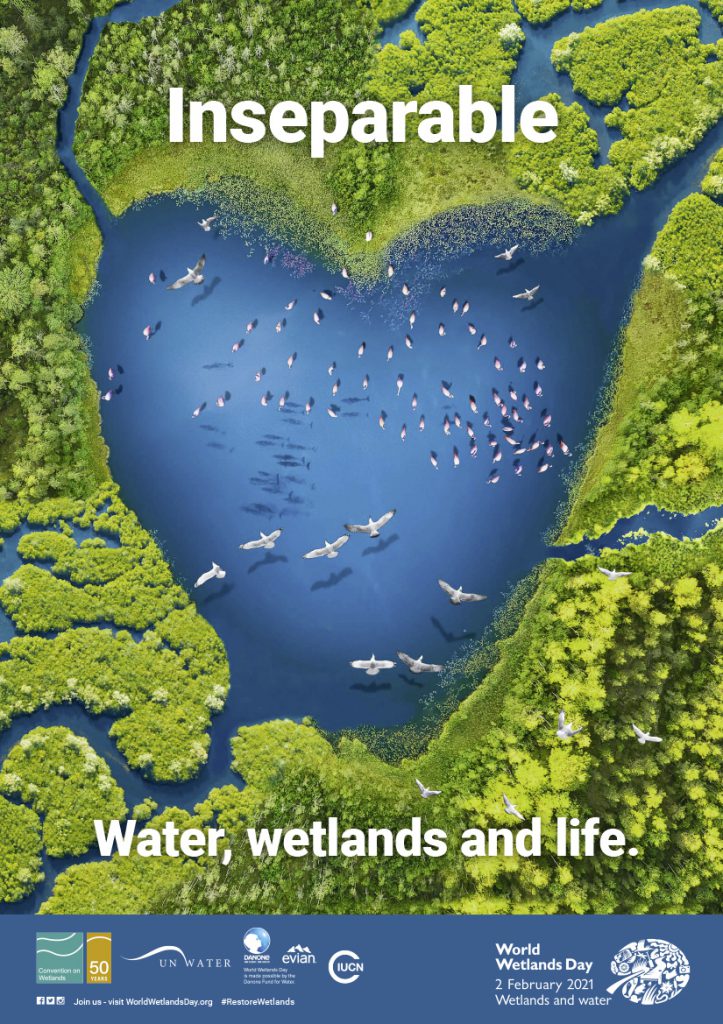Happy World Wetlands Day! To celebrate we are exploring wetlands and why they are critical to our protecting our drinking water supply in Indiana.
We give our wetlands many names – swamp, wet prairie, bog, marsh, fen to name a few. What is a wetland and why is it important in Indiana? Isn’t it just a “wasteland”?
While wetlands may have been thought of wastelands in the past, we now know they are a critical part of our ecosystem and water supply. A single definition could not accurately cover all wetlands, but all wetlands do share some commonalities in hydrology, soil, and vegetation.
Hydrology – Wetlands are areas where the soil is either saturated or covered with water for part or all of the year. In some cases it may be difficult to identify a wetlands as they could be dry during some part of the year.
Vegetation – Wetlands support specific plants which have adapted to the wet water and soil conditions. The plants are known as hydrophytic vegetation and exhibit physical qualities, such as shallow root systems, swollen trunks, or roots found growing from the plant stem or trunk above the soil surface. Some common plants include cattails, willows, and lily pads.
Soil – The soil types of wetlands are termed hydric soils and have characteristics that show they developed in conditions where the presence of water has limited soil oxygen for long periods during the growing season.
Benefits of Wetlands
Wetlands are important for many reasons across the globe – food supply (such as rice paddies), home to wildlife and protection from flooding to name a few.
In Indiana, our wetlands are critical to our drinking water supply – we can think of them as the kidneys of the earth! As the water in a wetland soaks into the ground – the wetlands take pollutants and contaminants out before the water reaches the groundwater. Groundwater resources, such as aquifers, make up the majority of drinking water sources in Indiana cities and towns. According to the U.S. EPA, one acre of wetlands can absorb as much as 1 million gallons of water at any given moment!
Indiana Wetlands Today
Prior to the 1800’s there were over 5.6 million acres of wetlands in Indiana covering more than 25% of the state. In the 1800s and 1900s we began to covert millions of acres of wetlands into farms, cities, and roads. Since then we have lost 4.7 million acros of wetlands and today they now cover only 4% of the state.
A current map of Indiana wetlands can be found at https://maps.indiana.edu/previewMaps/Hydrology/Wetlands_NWI.html. (Zoom in to the county level for best results).
There is no magic formula for how many wetlands we need, but as we continue to expand our understanding of these dynamic ecosystems, we stand in awe of all the ways they can contribute to our quality of life, economy, recreation – and the well-being plants, animals and all life on our planet.
Let’s work together this year and always to protect our wetlands and teach others how important they are!
Sources
https://www.in.gov/idem/wetlands/2336.htm
https://www.in.gov/idem/wetlands/2335.htm

